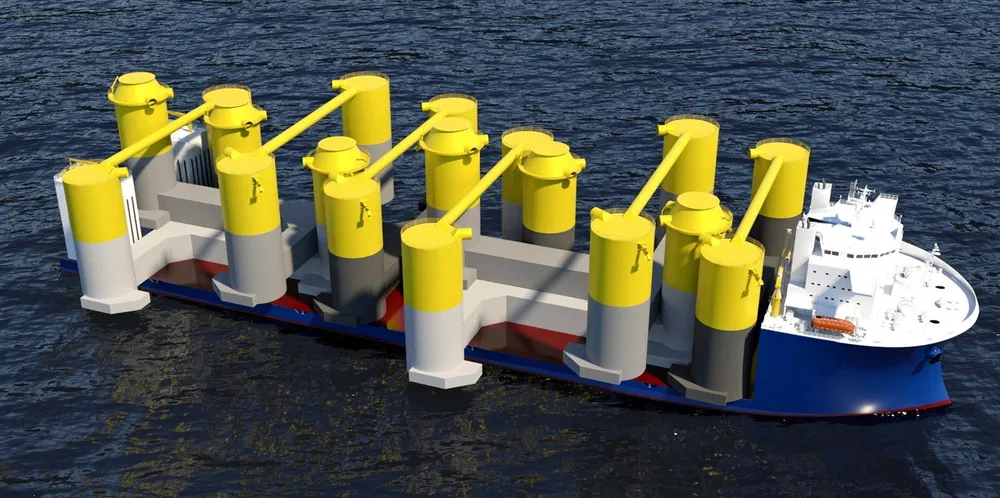Chinese shipyard CIMC Raffles-owned floating wind design wins ABS stamp of approval
Bassoe Technology's T-Floater concept lands 'approval in principle' from US certification body

Swedish engineering outfit Bassoe Technology has received an ‘approval in principle’ (AiP) anointment for its innovative T-Floater floating wind platform concept from classification society the American Bureau of Shipping (ABS).
<b>Focus your mind: get the insight you need with the Recharge Agenda</b>
The global energy transition is gathering momentum – and the accompanying news-stream becoming an information deluge. Separate the green giants from the greenwash and the hard facts from the click-bait headlines with Recharge Agenda, our curation of the market-making events of the week, distilled down into one quick-read newsletter. Sign up here for free
The t-shaped, three-column semisubmersible, devised for ultra-harsh North Sea conditions, is designed to be shuttled six-at-a-time on a heavylift, long-distance transport vessels or for in-water assemblies with 10-15MW turbines “facilitating flexibility in assembly port selection allowing quayside installation of the tower and turbine close to the wind farm”.
“ABS has supported on delivering more than 80MW of pioneering floating wind turbine projects to the market. It is great to be able to use this experience to support new innovation in the market, such as this novel design from Bassoe Technology,” said Greg Lennon, vice president for global offshore wind at ABS.
“We are committed to supporting the offshore wind supply chain through project designs that support new approaches to improving deployment processes and managing risks such as the T-Floater.”
Joakim Nilsson managing director of Bassoe, which is owned by Chinese shipyard CIMC Raffles, said: “The T-Floater has been designed to meet the demand for industrialisation and effective logistic solutions for floating wind.
“The ability to transport six 15MW T-Floaters on a single dry-tow vessel will allow for cost-efficient construction and transportation. Together with our parent company, we will have the ability to deliver more than 50 T-Floaters per year but we will also, due to the in-water assembly possibility, be able to work together with local shipyards with limited width of dry-docks/slip-ways to meet local content requirements.”